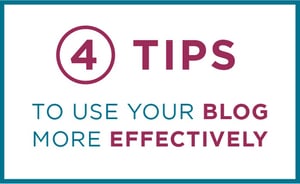
Blogging can be one of the most powerful tools in a company’s eCommerce business plan; high lead generation, high website traffic, and low bounce rate are all benefits of a successfully-run blog. An inefficiently-run blog, however, can be a major resource drain, and trying to roll out a new online sales program can be frustrating. The following four tips can help any blog succeed in an inbound marketing campaign.
 Entertain or Engage
Entertain or EngageContent, as we’ve talked about before, is one of the most crucial aspects of any successful eCommerce initiative. When creating content for blogs, your post should be relevant to your target audience, which can be done in two ways. By posting entertaining information, a company appeals to its target audience’s interests. For instance, a sports supply manufacturer could post something about the recent FIFA scandal. Secondly, by posting engaging content, a company can encourage its viewers to share the article or post their own opinions on Facebook, Twitter, etc., essentially creating free advertising.
As stated before, the relevance of your blog is determined by your audience. If your posts aren’t interesting to the majority of the visitors to your site, the bounce rate of your blog will rise and your business plan will suffer. When creating a post, know exactly what type of buyer you are trying to appeal to. You can also try writing multiple posts on the same topic, but change the writing style or content to target different profiles.
Blogging randomly or inconsistently will not generate website traffic or create many leads. Blogging daily is optimal, but even more important is sticking with a schedule. So, if blogging daily just isn’t possible at this time, don’t worry. Blogging every two, or even three days leads to a consistent pattern that your target audience can remember and adapt to.
Do keep in mind, however, that 82% of marketers on Hubspot said that they experienced an increase in inbound marketing when they blogged daily.
Below are some common ways that bloggers can measure success:
Start telling your eCommerce story today by trying out a few of these ideas. For more ideas to spark your eCommerce site, check out our blog.
Need help telling your story? Contact us to get started.
Lorem ipsum dolor sit amet, consectetur adipiscing elit

For the past two decades, we've made it our business to help you work smarter. From commerce challenges to ERP customizations, we support the power of your big ideas by helping you work more strategically, more intuitively, and more efficiently.
2658 Scranton Road, Suite 3
Cleveland, Ohio 44113
216.369.3600
No Comments Yet
Let us know what you think